Active and passive isolation systems
Active Mechanical Isolation – Triggers the release of a high-speed valve to form a mechanical barrier in the pipeline. Mechanical barriers provide protection against flame AND pressure propagation into connected equipment. A control panel and explosion detector are required as part of this system.
Passive Mechanical Isolation – An in-duct valve that closes as a reaction to the explosion pressure wave can be used for isolation of interconnected ducts of process vessels equipped with explosion protection. No additional controls or sensors are usually required.
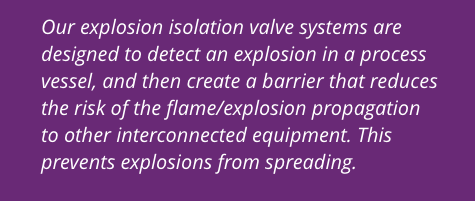
Isolation Valves
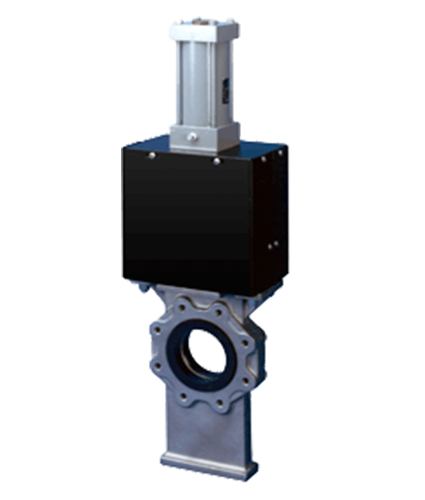
The High-Speed Isolation Valve provides a solution for vital explosion isolation applications. It operates in milliseconds to provide a mechanical barrier within a pipeline.
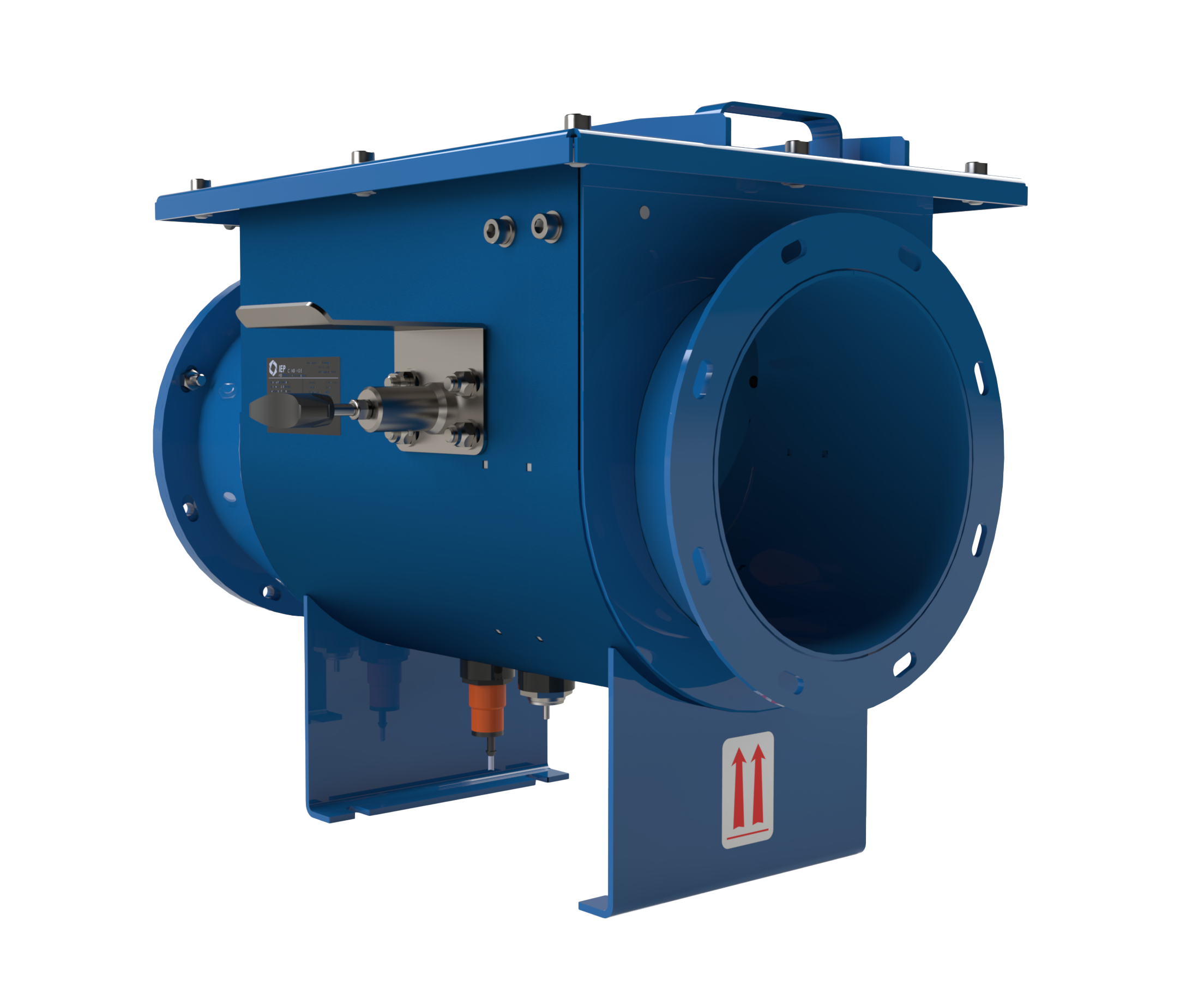
IsoFlap™ Passive Isolation Valve
The IEP Technologies range of passive isolation flap valves are low cost and reliable explosion isolation solutions which mitigate explosion propagation risks to upstream equipment. These passive isolation solutions are effective, self-actuating devices providing inlet explosion isolation to protected vessels handling combustible dusts such as dust collectors, cyclones, and other process equipment.
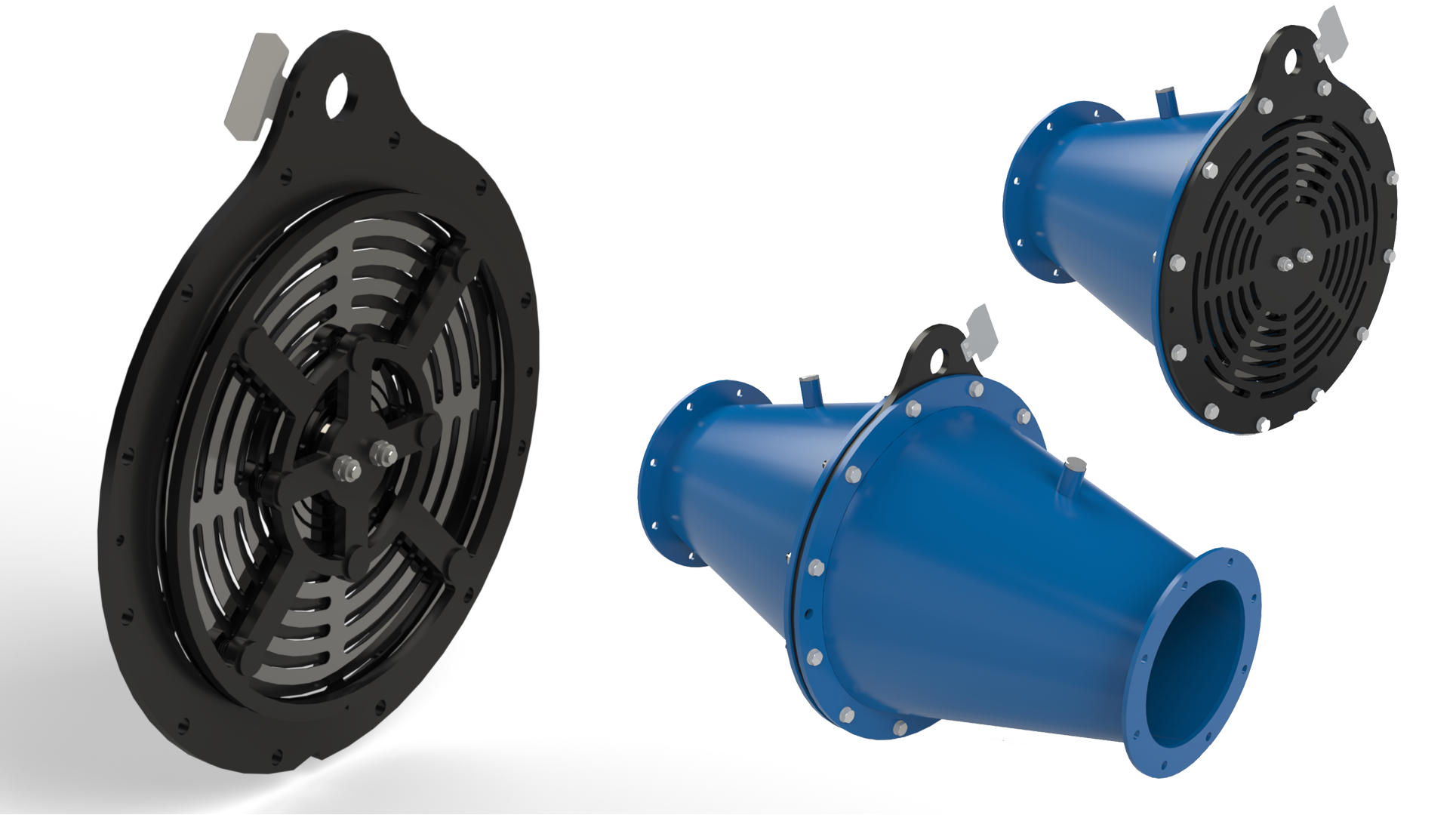
IsoDisc™ Passive Isolation Device
The IEP Technologies range of passive isolation devices type IsoDiscTM is a cost-effective and reliable explosion isolation solution that mitigates explosion propagation risks to upstream equipment or flame and pressure transmission to the environment. These passive isolation solutions are effective, self-actuating devices providing inlet explosion isolation to protected vessels handling combustible dust such as air aspiration inlets of mills or clean air pipe ducting connected to equipment where explosive dust is handled.
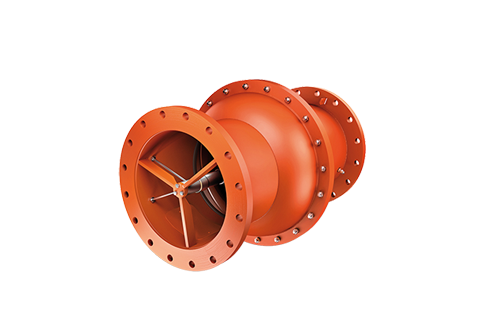
VENTEX Passive Isolation - Float Valve
For process equipment mounted outside or close to an outside wall, explosion relief venting is a viable protection method. However, in order to protect the upstream equipment, it is vital that the protection method includes a means to mitigate propagation of flame and burning materials back upstream.
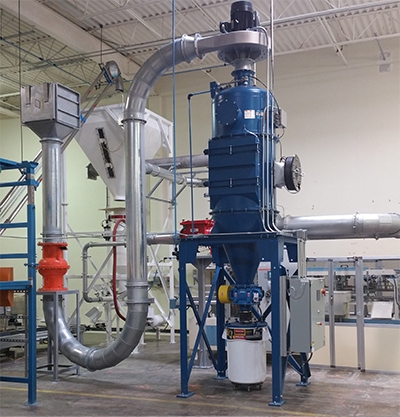
A key parameter for any explosion protection system or device is the range of dust reactivity (Kst) that is applicable. For explosion isolation valves there will be a minimum and a maximum Kst value that the device can be applied to. All of our products have been approved for use at the upper and lower Kst values by notified safety bodies according to the ATEX Directive and meet the requirements of NFPA 69.
Our goal with any explosion isolation valve project is the following:
- Reduce initial and ongoing cost.
- Provide high reliability – for example, the IsoFlap™ Passive Isolation Valve is a self-monitoring device with continuous dust accumulation and flap position monitoring with interface to plant. control/alarm/shutdown systems. This provides the NFPA 69-required outputs should a material buildup condition occur that could compromise the valve’s effectiveness.
- Reduce maintenance costs.
CASE STUDY AND ADDITIONAL INFORMATION
The robust, reliable and user friendly features of the IEP Technologies explosion isolation valves, coupled with the extensive testing and approvals for our products across a wide range of potential applications illustrates our continued investment and long-term capability as a trusted industrial explosion protection partner.
Take a look through some of our case studies below to get a feel for the work we do. For more information, contact us at 1-855-793-8407.
Download Case Study on Cost Effective Explosion ProtectionDownload Case Study on Passive Explosion Protection


